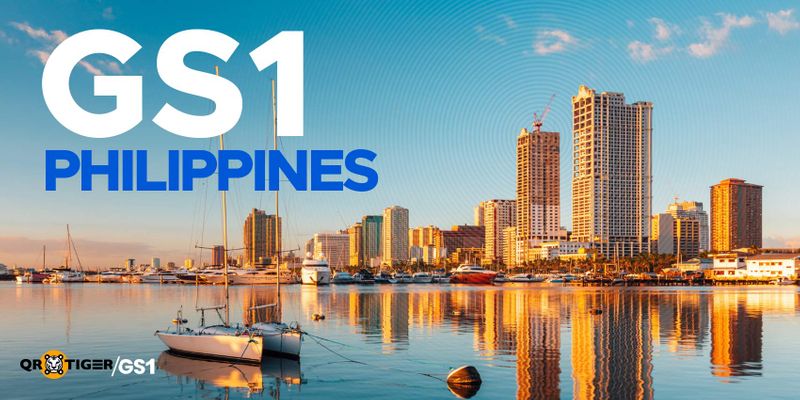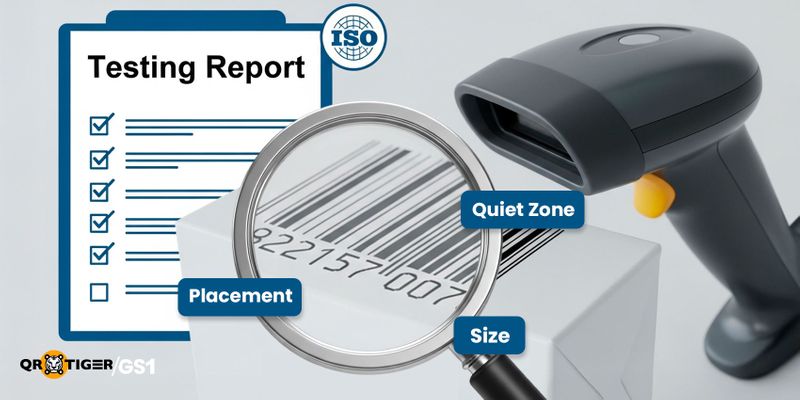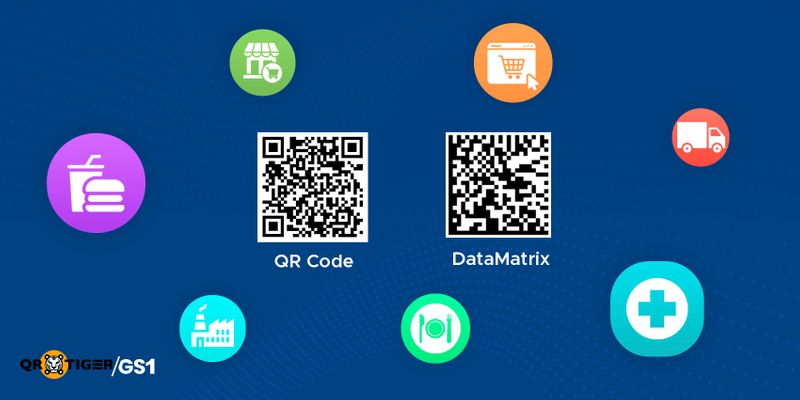GS1 Philippines: Digitizing Trade with Global Standards

Businesses across industries in the Philippines depend on standardized systems to improve how they manage products, meet regulatory requirements, and compete in the market. As the demand for accurate product data, traceability, and smooth trade grows, having reliable product data and sharing it effectively becomes essential for success.
GS1 Philippines (PH) supports this transformation by providing globally recognized standards such as GTINs (Global Trade Item Numbers), GLNs (Global Location Numbers), and barcodes. These tools help Filipino businesses reduce errors and align with both local and international regulations.
This blog explores how GS1 empowers industries in the Philippines to adopt global barcode standards, improve product data management, and shift toward 2D barcodes. These efforts boost traceability, make trade safer, and simplify supply chain processes.
Table of Contents
- What is GS1 Philippines?
- Introduced initiatives and collaborated campaigns
- GS1 PH services for businesses
- Applications of 2D barcodes across industries in the Philippines
- Inspiring Success Story from GS1 PH: Kangkong King
- Empowering Philippine Industries through Global Standards
- Frequently asked questions
What is GS1 Philippines?
GS1 PH was first known as the Philippine Article Numbering Council (PANC). It is the official Philippine member organization(MO) of GS1, the global body that develops and maintains standards for supply chain and product identification globally.
It’s the only authorized entity licensed to issue GS1 barcodes and GTINs in the Philippines. Businesses can integrate these product codes on their products to sell them locally and globally. It provides a suite of services tailored to the needs of sectors like retail, transport & logistics, healthcare, and technical industries.
Contact information:
Address: GS1 Philippines Building, 20 San Rafael Street, Barrio Kapitolyo, 1603 Pasig City, Philippines
Contact no: + 63 947 524 3043
Email: info@gs1ph.org
Introduced initiatives and collaborated campaigns
GS1 PH collaborates with top industry players to advance global standards that support digital growth and more intelligent supply chain systems.
Collaboration with Amazon Global Selling and CCIP (Chamber of Cosmetics Industry of the Philippines)
GS1 supported the collaboration between Amazon Global Selling and CCIP to foster cross-border e-commerce operations.
Amazon Global Selling has launched a remote support team to help small and medium-sized enterprises (SMEs) in the Philippines grow through cross-border e-commerce. Based in Singapore, the team will introduce local sellers to Amazon’s tools and resources, making it easier for them to start selling, launch products, and build global brands.
This move comes in response to concerns from Philippine sellers about limited knowledge and skills in using the platform. Since Amazon Global Selling began supporting Philippine sellers three years ago, many have successfully built their businesses from scratch.
With more Filipinos using mobile internet and e-commerce platforms, the country’s cross-border trade potential continues to rise.
CCIP vs fake cosmetics
GS1 PH has partnered with the Chamber of Cosmetics Industry of the Philippines to tackle the growing issue of counterfeit cosmetic products. This collaboration focuses on using advanced barcode technology to help manufacturers and retailers verify product authenticity and protect consumers from unsafe or banned items.
The initiative comes at a critical time, as the beauty and personal care market in the Philippines reached $6.37 billion in revenue in 2024, with steady growth projected through 2028.
However, the industry is facing big challenges, especially with the spread of fake products. Some banned items have even been found in local shops recently, raising concerns about safety.
By adopting GS1 standards, cosmetics companies can improve inventory tracking, ensure product legitimacy, and build stronger consumer trust. This campaign highlights how global standards and digital tools can support safer, more transparent trade in high-growth sectors like personal care.
Department of Health (DOH) Partnership
GS1 PH is actively promoting the use of barcode technology in health care to improve workflow efficiency and patient safety. By applying GS1 standards, hospitals and medical suppliers can capture data more accurately, manage inventory more efficiently, and track medicines and equipment with greater precision.
These efforts align with the World Health Organization’s Global Strategy on Digital Health 2020–2025, which highlights the role of digital tools in improving health outcomes.
To raise awareness and encourage adoption, GS1 PH participated in key regional events such as the GS1 Health Care Roadshow in Hong Kong and the GS1 Asia-Pacific Forum 2024. These platforms showcased how 2D barcodes and digital links can streamline patient care and support smarter supply chain management.
The organization also visited CUHK Medical Centre to explore innovations like automated systems and smart dispensing machines that demonstrate the practical benefits of barcode integration.
GS1 PH’s initiatives are in step with the Department of Health’s goal to digitalize the country’s health care system and improve access to essential medicines.
GS1 PH and Department of Trade and Industry (DTI)
GS1 PH has partnered with several branches of the DTI across the Philippines to help Micro, Small, and Medium Enterprises (MSMEs) improve their business operations.
Many of these DTI offices organized Zoom webinars, which were attended by MSMEs from various industries. The sessions saw strong participation and support from different industries.
GS1 PH services for businesses
GS1 offers practical tools and services that help businesses work more efficiently and encourage innovation across different sectors.
Global Data Synchronization Network (GDSN)
The GDSN is a global system that helps businesses share accurate product information with their trading partners. It connects suppliers and retailers through trusted data pools. It makes sure each company does not need to keep its own version of product details.
When a supplier uploads product data (for example: size, name, ingredients, packaging details, or dimensions) into their data pool, it’s standardized and automatically shared with all connected partners. This ensures everyone uses the same, up-to-date information.
GDSN helps reduce errors, improve supply chain efficiency, and meet global data standards. It is designed for detailed, business-to-business data sharing to support smooth trading and compliance.
Verified by GS1
The service checks if a product’s barcode and GTIN follow GS1 standards and are officially registered. It accesses data from the GS1 Registry Platform to confirm that the product ID belongs to the right company and matches official records. This helps reduce errors and improve transparency between trading partners.
Barcode testing

GS1 offers barcode testing to make sure barcodes meet global standards and can be scanned easily. The service checks key aspects like:
- Size and placement: Barcodes must be the right size and in the correct place on the packaging.
- Quiet zones: There should be enough blank space around the barcode to help scanners read it properly.
- Print quality: The barcode must be clear and easy to read for accurate scanning.
These checks help avoid errors and ensure smooth operations across supply chains.
Testing process
- Sample submission: Companies send barcode samples like laser prints, mock-ups, or color proofs. Digital files can be used for early checks.
- Reports: GS1 gives interim reports that most retailers accept to start buying. A full report comes after the final samples.
- Verification standards: The testing process follows global rules (ISO/IEC 15416) to make sure barcodes meet international quality standards.
Applications of 2D barcodes across industries in the Philippines
By 2027, the retail sector will be moving toward smarter product labeling using 2D barcodes. These advanced codes carry much more information than traditional 1D barcodes, helping businesses improve product tracking and customer engagement.
Driven by the GS1 Sunrise 2027 initiative, this global change aims to make shopping more efficient and transparent across both digital and physical channels. The shift is not mandatory yet, so companies may continue using 1D barcodes if permitted by their industry rules.
To support a smooth transition, many businesses are using dual marking (placing both 1D and 2D barcodes on packaging). This allows current systems to function without disruption while preparing for future retail technology upgrades.
To get ready for Sunrise 2027, businesses can choose between two paths: they can either generate GS1-compliant 2D barcodes themselves by following GS1’s official guidelines, or they can rely on trusted third-party tools such as QR Tiger’s GS1 QR code generator.
For companies with limited time or technical skills, these external tools provide a fast and dependable way to create and use next-generation barcodes, helping make the shift easier and more practical.

Here are some of the key applications of these codes across industries in the Philippines:
Retail
Retailers are adopting GS1-compliant 2D barcodes to improve inventory accuracy, point of sale (POS) operations, and customer engagement. These barcodes can carry more data than traditional 1D codes, including expiry dates, batch numbers, and promotional content. This supports faster scanning and richer product information.
When customers scan a GS1 Digital Link QR code, they may be directed to detailed product pages that may include descriptions, reviews, and brand stories. This allows brands to link physical products to online content, helping boost transparency and build stronger connections with customers.
Healthcare
Hospitals, pharmacies, and medical suppliers use GS1 DataMatrix to improve patient safety and product traceability. These barcodes store critical data like serial numbers, expiration dates, and lot numbers, helping healthcare providers track medications and medical devices from manufacturer to patient. This helps reduce human errors and counterfeit medicines.
Food and agriculture
Food producers and agribusinesses are using 2D barcodes to trace products from farm to shelf. These codes can include harvest dates, origin details, and handling instructions. These details are vital for food safety and quality assurance, especially in export markets.
A QR code embedded with a GS1 Digital Link can help companies respond quickly to recalls, reduce waste, and provide transparent product information that customers can easily access by scanning with their phones.
However, this system mainly applies to packaged food items that use GTINs. Products without GTINs, such as loose produce, are not part of this.
Manufacturing
In the manufacturing sector, 2D barcodes, particularly GS1 DataMatrix and QR codes, are being adopted to improve product traceability, inventory accuracy, and regulatory compliance. These barcodes can encode multiple data elements such as the GTIN, batch or lot number, expiration date, and serial number, all within a compact symbol.
This enables manufacturers to optimize operations, reduce manual errors, meet international standards, and improve quality control.
By embedding richer data onto products, manufacturers can enhance supply chain visibility and strengthen coordination with global partners.
Logistics
GS1’s Scan4Transport standard brings smarter logistics solutions by embedding key shipping details into a single 2D barcode on transport labels. This makes scanning faster, optimizes delivery planning, and improves supply chain visibility.
For example, when a logistics partner scans a GS1 QR code, they can instantly capture shipment identifiers and handling instructions and use this data to quickly access shipment status and compliance records from connected systems.
Inspiring Success Story from GS1 PH: Kangkong King
Kangkong King started as a small snack idea and quickly grew into a popular brand. After joining a bazaar in 2019 and opening a kiosk at Robinsons Place Manila, the company expanded its Kangkong chips into packaged products sold in major stores like SM Malls Kultura, Unimart, and The Vegan Grocer.
To support this growth, Kangkong King teamed up with GS1 PH. With GS1’s help, they began using standardized barcodes, making it easier to label their products clearly and consistently across different packaging types.
By using GS1 barcodes, Kangkong King simplified product identification, met retailer requirements, and improved inventory management, making it easier to serve their expanding client base efficiently.
The company credits GS1 PH for making the process smooth and efficient, highlighting the staff’s responsiveness and clarity in guiding them through barcode implementation.
Adding barcodes also made their products look more professional and trustworthy to both retailers and customers.
Looking ahead, Kangkong King is eager to deepen its understanding of GS1 systems and continue evolving with industry standards.
 Empowering Philippine Industries through Global Standards
Empowering Philippine Industries through Global Standards
GS1 Philippines plays a vital role in helping local industries modernize their supply chains through globally recognized standards. Its services empower businesses to improve traceability, reduce errors, and meet both local and international regulatory requirements.
Through active participation in global initiatives and collaborations with regulatory bodies, GS1 Philippines supports a smarter, more transparent trade environment. Joining GS1 gives businesses access to trusted tools and standards that help them grow, build customer trust, and succeed in today’s digital marketplace.
Frequently asked questions
1. What is the role of GS1 PH in sustainability?
GS1 PH supports sustainability by helping businesses use GS1 standards like barcodes and data-sharing systems to improve traceability and operational efficiency.
These standards enable companies to reduce waste, manage resources better, and build more sustainable supply chains. At events such as ProPak Philippines 2025, it highlights how these tools enable a greener, sustainable supply chain.
2. What is Verified by GS1, and who benefits from it?
This service ensures that a product’s barcode and GTIN meet GS1 standards and are properly registered. It pulls data from the GS1 Registry Platform to verify that the product identifier is correctly linked to the authorized company and aligns with official records.
3. What organizations collaborate with GS1 Philippines, Inc.?
GS1 Philippines, Inc. is backed by a network of leading industry associations across various sectors in the country. These include:
- Philippine Chamber of Commerce and Industry (PCCI)
- Philippine Consumer Centric Traders Association (PCCTA)
- Philippine Retailers Association (PRA)
- Philippine Food Processors & Exporters Organization (PHILFOODEX)
- Packaging Institute of the Philippines (PIP)
- Philippine Exporters Confederation (PHILEXPORT)
- Philippine Chamber of Food Manufacturers, Inc. (PCFMI)
- Chamber of Cosmetics Industry of the Philippines (CCIP)
- Pharmaceutical & Healthcare Association of the Philippines (PHAP)
DISCLAIMER: We acknowledge that GS1, as well as the materials, proprietary items, and all related patents, copyright, trademark, and other intellectual property (collectively, “intellectual property”) relating to its use, are the property of GS1 Global, and that our use of the same shall be in accordance with the conditions provided by GS1 Global.



